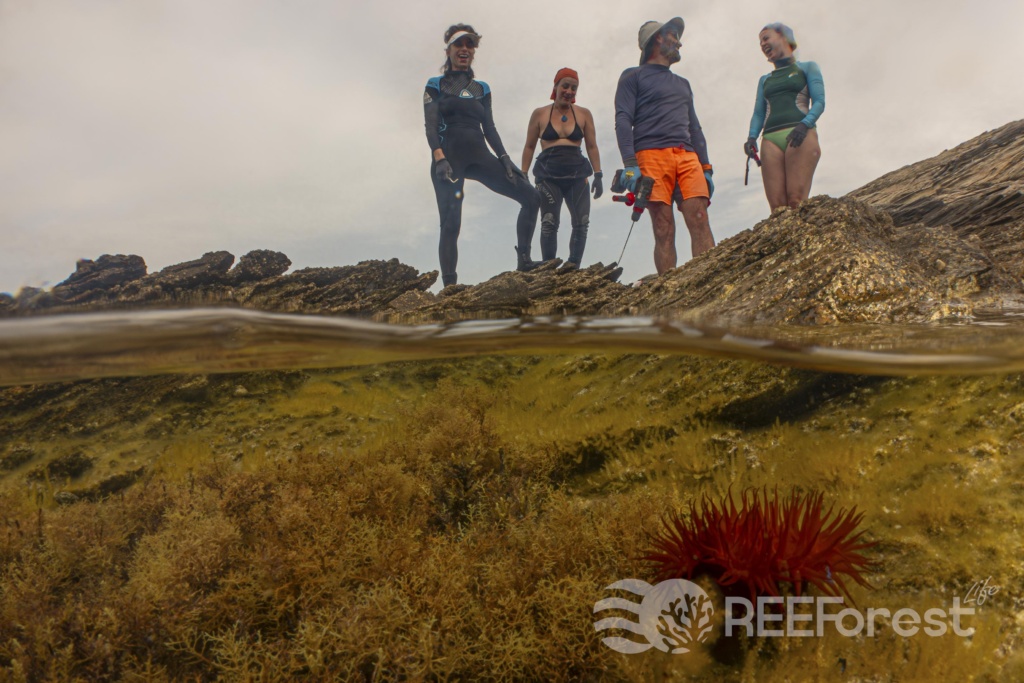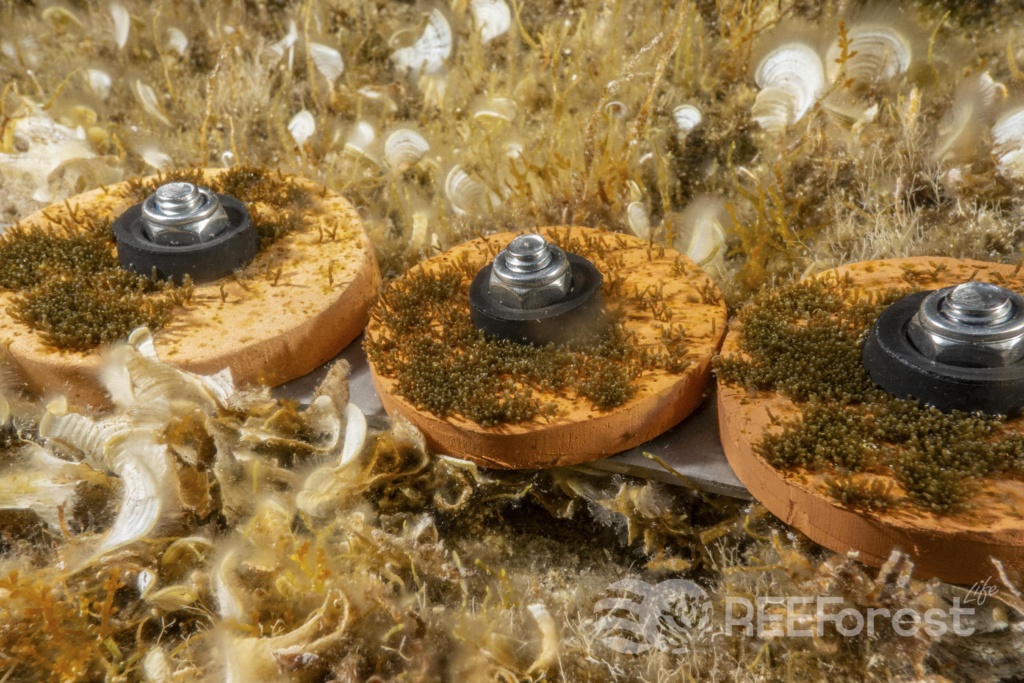The first successful cultivation of Cystoseira offspring by the Hellenic Centre for Marine Research (HCMR) team took place earlier this spring, following several months of intense preparations.
Efforts began in February 2024, when researchers started the regular monitoring of Cystoseira to identify an appropriate donor site bearing healthy and well-developed populations with fertile apices, suitable for laboratory cultivation.
In the eastern Mediterranean, this seems to be no easy task: Cystoseira populations have been suffering a dramatic decline due to herbivore overgrazing but also a reduced reproductive capacity, possibly related to recurrent temperature anomalies.
It was mid-May when finally an abundant population of Cystoseira amentacea was detected thriving along the coasts of a small uninhabited rocky islet of Saronikos Gulf in full fertility: REEForest project was given the green light to proceed!
The meticulous cultivation of seedlings began promptly in a carefully controlled environment, aiming to provide young individuals of Cystoseira with optimal conditions for their early fragile growth stages.
Continuous care by devoted researchers paid off: by early June, 521 Cystoseira thickly-coated clay tiles were packed as they were ready to be transferred to Gyaros Island, a Greek Marine Protected Area celebrated for its rich biodiversity and historical importance.
The transfer phase was not without challenges.
Equipment malfunctions, such as underwater drill failure at critical moments, and sudden shifts in weather conditions kept the team on tenterhooks.
Notwithstanding, the dedication and resourcefulness of the team ensured the mission’s accomplishment as planned, and the first batch of cultivated tiles was successfully fixed on the shallow reefs of a sheltered bay along Gyaros east coast.
Three months later, the results are highly encouraging. The young Cystoseira plants are still safe and sound, slowly but surely growing, and steadily reclaiming their natural habitat.
In addition, numerous juvenile fish, gastropods, crustaceans and other algae already seem to be attracted to these emerging underwater gardens. It is now up to time and mother nature to take over.
Special thanks are due to the crew of S/Y Athos, whose expertise and swift response during challenging moments proved invaluable.
The Management Body of Central Aegean Protected Areas also played a crucial role, providing logistical support and resources to ensure the project’s success whenever practical difficulties arose.
As the project continues to unfold, lessons learned through this challenging but rewarding experience will be key to future restoration efforts across the Aegean Sea and, hopefully, well-beyond.





